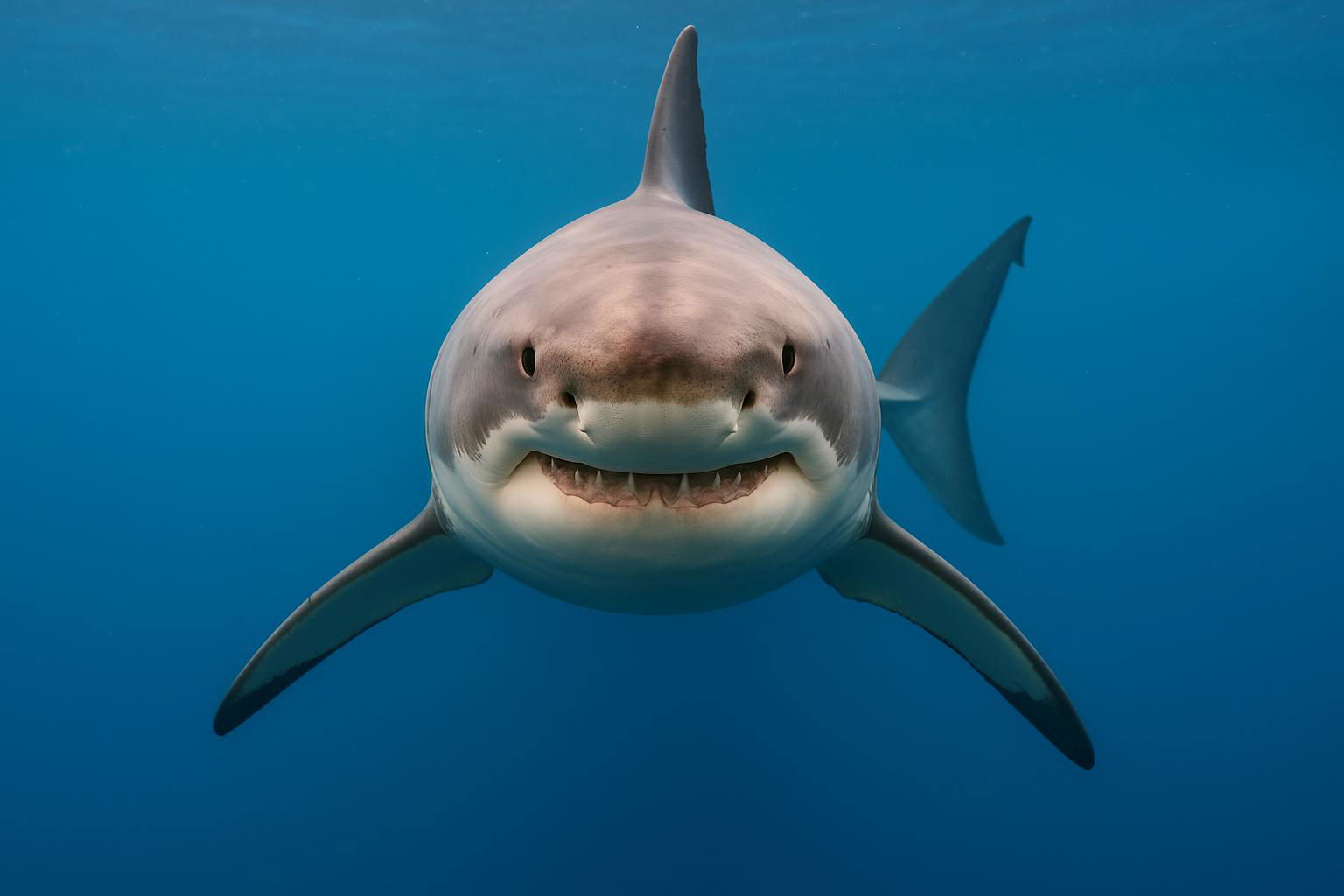
Great White Shark
Carcharodon carcharias
The Great White Shark (Carcharodon carcharias) is a formidable and iconic apex predator inhabiting many of the world’s temperate coastal waters. Renowned for its impressive size, this species can reach lengths of up to 20 feet and weigh over 4,000 pounds. Recognizable by their robust, torpedo-shaped bodies, Great Whites possess a distinctive conical snout and a powerful tail, contributing to their incredible swimming prowess, allowing speeds of up to 25 mph.
Their dorsal side is typically slate-gray, facilitating camouflage from above, while their ventral side is stark white, making them less visible from below—a countershading adaptation ideal for hunting. The Great White's highly developed senses, including acute olfactory capabilities and electroreception, make it an adept hunter, primarily preying on marine mammals like seals and sea lions, as well as fish and carrion.
Social behavior in Great Whites remains somewhat elusive, yet they are known to exhibit intriguing patterns of dominance within their hierarchies. Despite their portrayal in popular media, they seldom pose a threat to humans, with most encounters being driven by curiosity. Conservation concerns exist for the Great White Shark due to threats like overfishing and bycatch, leading to their classification as a vulnerable species. Their presence is crucial for maintaining marine ecosystem balance, underscoring the importance of continued conservation efforts.

 All Species & Breeds
All Species & Breeds
 Highland Cattle
Highland Cattle
 Miniature Donkeys
Miniature Donkeys
 All Species Directory
All Species Directory
 Highland Cattle in Virginia
Highland Cattle in Virginia
 Miniature Donkeys in Texas
Miniature Donkeys in Texas












